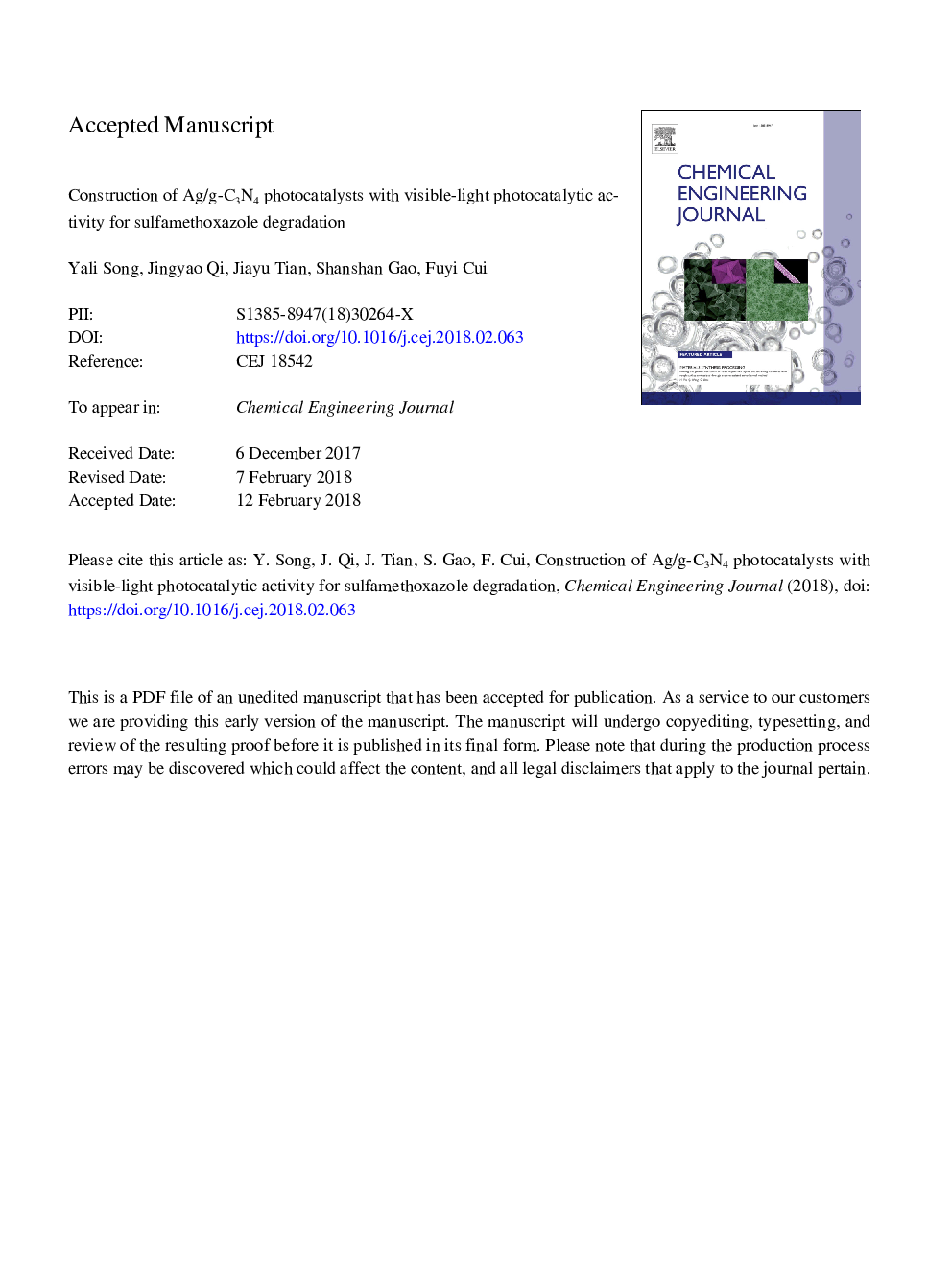| Article ID | Journal | Published Year | Pages | File Type |
|---|---|---|---|---|
| 6579928 | Chemical Engineering Journal | 2018 | 41 Pages |
Abstract
Ag/g-C3N4 was successfully synthesized by a photo-reduction method. By using PVP as a protecting agent, Ag nanoparticles were uniformly dispersed on g-C3N4 sheets and the average diameter (ca. 20â¯nm) of Ag nanoparticles were well controlled when increasing Ag content from 1â¯wt% to 10â¯wt%. The visible-light-induced photocatalytic activity of Ag/g-C3N4 was investigated by the degradation of sulfamethoxazole (SMX). The results exhibited that Ag/g-C3N4 displayed excellent visible-light photocatalytic performance. Compared with g-C3N4, the removal efficiency of SMX by 5â¯wt% Ag/g-C3N4 was increased by 32.1% and the TOC removal was increased by 11.5% due to the SPR effect of Ag nanoparticles. Compared with Ag/g-C3N4 synthesized without PVP, the removal efficiency of SMX by the 5â¯wt% Ag/g-C3N4 was increased by 10.2%. Photogenerated holes and O2â radicals were identified as the main active species and three intermediates were identified in SMX degradation by 5â¯wt% Ag/g-C3N4, which were the same as that by g-C3N4, but the changing trend of produced intermediates was different. The produced intermediates of m/z 99 and m/z 270 can be further degraded by 5â¯wt% Ag/g-C3N4, but not by g-C3N4. The 5â¯wt% Ag/g-C3N4 also exhibited superior photocatalytic performance on the photodegradation of SMX in real waters, such as surface water and WWTP secondary effluent. This work may provide an appealing strategy on green remediation of contaminated water environment.
Related Topics
Physical Sciences and Engineering
Chemical Engineering
Chemical Engineering (General)
Authors
Yali Song, Jingyao Qi, Jiayu Tian, Shanshan Gao, Fuyi Cui,
